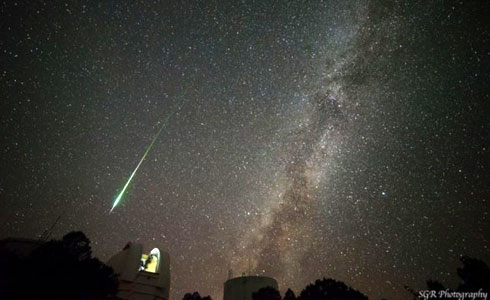Weekly Science Picks

After the Perseid meteor shower last weekend, it seems that lots of exciting things have been discussed this week. Here are a few of the things which caught my eye.
The first of my picks is homegrown here on Australian Science, if you’ll pardon the pun. A sustainable food source for space travellers and outposts is one which has a lot of scientists and engineers scratching their chins, as does dealing with waste products. Which makes the prospect of using a form of bacteria to recycle waste and generate a food supply a very interesting one…
Red bacteria as astronaut food
Bacteria offer an attractive ingredient for space food. Quick and easy to grow, exponentially and to large numbers, and can provide the basic nutrients. And it was in search for astronaut space food that another discovery was made.
There’s been a lot of talk this week about the Hyperloop – a high speed transit system conceived by everyone’s favourite space entrepreneur, Elon Musk. I must say, the concept looks quite exciting.
Hyperloop
The design of Hyperloop has been considered from the start with safety in mind. Unlike other modes of transport, Hyperloop is a single system that incorporates the vehicle, propulsion system, energy management, timing, and route. Capsules travel in a carefully controlled and maintained tube environment making the system is immune to wind, ice, fog, and rain. The propulsion system is integrated into the tube and can only accelerate the capsule to speeds that are safe in each section. With human control error and unpredictable weather removed from the system, very few safety concerns remain.
Poor Voyager 1. For a startlingly long time now, we’ve been unsure about whether or not it’s actually left the Solar System and the protective influence of the Sun’s solar wind. In fairness, this is because it’s truly an explorer and, in a manner which would make any Star Trek fan proud, going where no one has gone before. All the same, the most recent buzz is that Voyager 1 may have indeed left the Solar System. In fact, it looks like it did so last year. (Though this study will no doubt remain contentious, there are a few of us who suspected this was the case).
Voyager 1 Spacecraft Left Solar System Last Year, Study Suggests
“It’s a somewhat controversial view, but we think Voyager has finally left the solar system, and is truly beginning its travels through the Milky Way,” lead author Marc Swisdak of the University of Maryland said in a statement.
Interestingly though, some recent archaeological discoveries suggest that, despite the achievements of human technology, the first technology wasn’t created by modern humans at all. The exact nature of our extinct cousins, the neandertals, is shrouded in mystery, but it looks as though the first specialised bone tools ever created on Earth were made by them, and not us homo sapiens.
Neandertals Made the First Specialized Bone Tools in Europe
How widespread this new Neandertal behavior was is a question that remains. The first three found were fragments less than a few centimeters long and might not have been recognized without experience working with later period bone tools. It is not something normally looked for in this time period. “However, when you put these small fragments together and compare them with finds from later sites, the pattern in them is clear,” comments Shannon McPherron. “Then last summer we found a larger, more complete tool that is unmistakably a lissoir like those we find in later, modern human sites or even in leather workshops today.”
I hope everyone has a good week!
Image: A luminous Perseid meteor over the McDonald Observatory, Texas. Credit and copyright: Sergio Garcia Rill/SGR Photography.
Hammonds M (2013-08-18 19:04:02). Weekly Science Picks. Australian Science. Retrieved: Jul 19, 2025, from https://ozscience.com/news/weekly-science-picks-42/
 Follow
Follow
1 thought on “Weekly Science Picks”
Comments are closed.